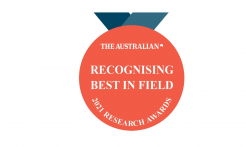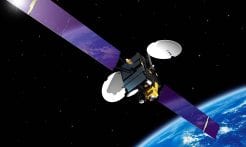Professor Sabatini’s lectures focus on Cyber-Physical Systems (CPS) for trusted autonomous air and space operations and are based on the ongoing research and educational activities conducted by the IEEE AESS Avionics Systems Panel and by the CPAS Group in collaboration with various industry/government partners, including Thales Airspace Mobility Solutions, Northrop Grumman, Honeywell, the Australian DoD, the US DoD, the SmartSat CRC, DLR, ICAO, IFATCA, CASA, and others. Advances in aerospace CPS are accelerating the introduction of automated decision making functionalities and the progressive transition to trusted autonomous operations both in civil and military applications. Major benefits of these capabilities include de-crewing of flight decks and ground control centres, as well as the safe and efficient operations of air and space platforms in a shared, unsegregated environment. In the commercial aviation context, CPS are supporting the development of single-pilot operated aircraft, with the co-pilot potentially replaced by a digital assistant and/or a remote pilot on the ground. The ground remote pilot, on the other hand, will no longer be restricted to controlling a single aircraft and instead will be allowed to control multiple manned and unmanned vehicles, in line with the so-called One-to-Many (OTM) operational concept.
Important efforts are also being devoted to the integration of Unmanned Aircraft Systems (UAS) in all classes of airspace, eliciting the introduction of UAS Traffic Management (UTM) services seamlessly integrated with the existing (and evolving) ATM framework. In particular, UTM requires substantial advances in Communication, Navigation, Surveillance (CNS) for ATM (CNS/ATM) and Avionics (CNS+A) technologies and associated regulatory frameworks, especially to enable low-altitude and Beyond-Line-of-Sight (BLoS) operations. Recent advances in communications, navigation and Sense-and-Avoid (SAA) technology are therefore progressively supporting UTM operations in medium-to-high density operational environments, including urban environments. Research efforts are also necessary to demonstrate the feasibility of CNS+A technologies capable of contributing to the emission reduction targets set by the International Civil Aviation Organization (ICAO), national governments and various large-scale international research initiatives. Therefore, growing emphasis is now being placed on environmental performance enhancements, focusing on Air Traffic Flow Management (ATFM), dynamic airspace management, 4-dimensional (4D) trajectory optimization, airport automation and, in the near future, urban flight operations.
In addition to CNS+A technologies for air operations, space CPS are also being researched for a wide range of practical applications including commercial satellites, space transport/tourism, and interplanetary scientific missions. In this context, it is anticipated that economically viable and reliable cyber-physical systems will play a fundamental role in the successful development of the space sector and significant research efforts are needed in the field of reusable space transportation systems, Space Traffic Management (STM), and Intelligent Satellite Systems (SmartSats). In particular, the operation of space launch and re-entry platforms currently requires considerable airspace segregation provisions, which if continued will become increasingly disruptive to civil air traffic. Moreover, the currently limited space situational awareness is posing significant challenges to the safety and sustainability of spaceflight due to the rapidly growing amount of resident space objects and particularly orbital debris. The deployment of network-centric CNS+A systems and their functional integration with ground-based ATM in a Space Traffic Management (STM) framework will support a much more flexible and efficient use of the airspace with higher levels of safety. These evolutions will support the transition to what the research community has started designating as Multi-Domain Traffic Management.
For further information, please visit the following IEEE AES Society webpages:
https://ieee-aess.org/education/distinguished-lecturer-and-tutorial-program
http://ieee-aess.org/webinar-series-iii/sabatini
http://ieee-aess.org/webinar-series-iii





